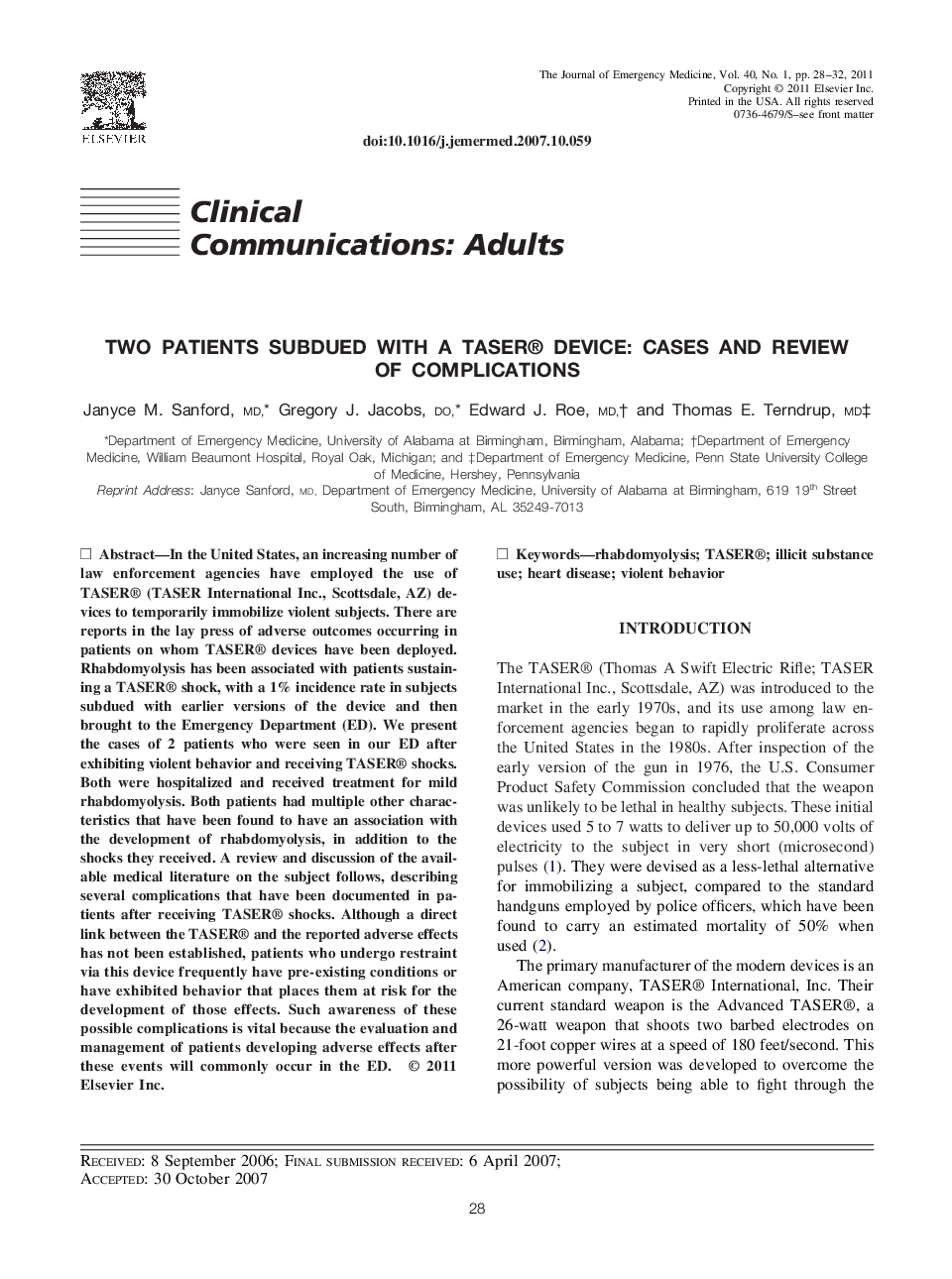| Article ID | Journal | Published Year | Pages | File Type |
|---|---|---|---|---|
| 3248873 | The Journal of Emergency Medicine | 2011 | 5 Pages |
In the United States, an increasing number of law enforcement agencies have employed the use of TASER® (TASER International Inc., Scottsdale, AZ) devices to temporarily immobilize violent subjects. There are reports in the lay press of adverse outcomes occurring in patients on whom TASER® devices have been deployed. Rhabdomyolysis has been associated with patients sustaining a TASER® shock, with a 1% incidence rate in subjects subdued with earlier versions of the device and then brought to the Emergency Department (ED). We present the cases of 2 patients who were seen in our ED after exhibiting violent behavior and receiving TASER® shocks. Both were hospitalized and received treatment for mild rhabdomyolysis. Both patients had multiple other characteristics that have been found to have an association with the development of rhabdomyolysis, in addition to the shocks they received. A review and discussion of the available medical literature on the subject follows, describing several complications that have been documented in patients after receiving TASER® shocks. Although a direct link between the TASER® and the reported adverse effects has not been established, patients who undergo restraint via this device frequently have pre-existing conditions or have exhibited behavior that places them at risk for the development of those effects. Such awareness of these possible complications is vital because the evaluation and management of patients developing adverse effects after these events will commonly occur in the ED.
